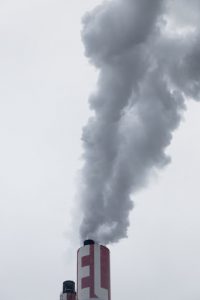
Using satellites, a group of scientists from France and the United States has successfully identified a number of methane “ultra-emitters” which produce approximately 8-12% of the methane leaking into the Earth’s atmosphere. According to scientist Tom Lauvaux of the University of Paris-Saclay, stopping these leaks would be beneficial to the planet and would save billions of dollars (ScienceNews).
Methane ultra-emitters are sources that leak at least 25 metric tons of methane per hour in irregular bursts. Most of these ultra-emitters are located in six countries, which include the United States, Russia, and Turkmenistan. Turkmenistan contained the most ultra-emitters of the six countries (ScienceNews). In total, the satellite data, which was collected over a period of two years, detected around 1,800 ultra-emitters. These ultra-emitters make up a small fraction of the sources that leak methane into the atmosphere, but account for a disproportionately large amount of the gas emissions (Eco-Business).

Methane is currently the second largest contributor to climate change, just under carbon dioxide. These two greenhouse gasses have different rates of degradation in the atmosphere. Methane usually degrades within ten to twenty years, so it doesn’t accumulate as much as carbon dioxide, which can take centuries to degrade. However, methane also has a much higher potential to warm the atmosphere (ScienceNews). Stopping the methane ultra-emitters from spewing gas into the atmosphere would put the world in a better position to fight global warming (The Economist).
The scientists who made the discovery calculated that stopping the leaks from ultra-emitters would be the equivalent of removing 20 million vehicles from the road each year. This would also prevent around 1,600 annual deaths from heat exposure. Stopping the leaks could be as simple as fixing damaged pipelines, meaning that these improvements would come at very little cost to the countries that contain methane ultra-emitters (Washington Post).

Currently, the United States is already working on regulations which would cut back on methane emissions. The Environmental Protection Agency’s proposed regulations would reduce methane emissions by more than 40 million tons between 2023 and 2035 (NaturalGasIntel). These proposed regulations come after the COP 26 Climate Summit in Fall of 2021 where more than 100 countries, including the United States, signed a pledge to cut back on methane emissions by 30% by 2030. According to President Biden, the agreement will reduce asthma and respiratory illnesses while also increasing food supplies by cutting crop losses (Independent).
Written by: Matthew Jenkins
Date: 3/14/2022
Sources:
https://www.independent.co.uk/climate-change/news/cop26-methane-pledge-greenhouse-gas-b1949850.html
https://www.sciencenews.org/article/satellites-locate-methane-ultra-emitters
